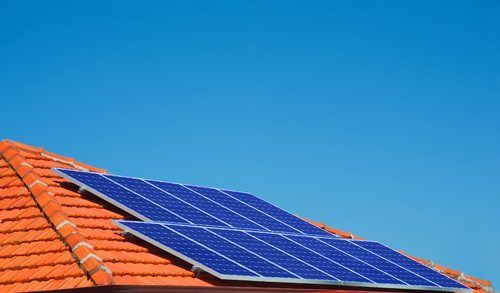

You may have heard of the expression “grid parity”. In the case of rooftop solar panels, it is the point where the cost of energy supplied from your own rooftop solar array falls below the cost of grid-power.
It is also known as “socket parity”, because it compares the price of rooftop solar power to the cost of grid-sourced power at the electricity sockets in your house.
Australia was one of the first countries in the world to reach grid or socket parity – thanks to its high electricity prices (largely due to soaring network costs), and its excellent sunshine. There are now nearly 100 countries that have reached the same benchmark.
But Australia has not just reached socket parity, it has smashed it. In most cities in Australia, the cost of rooftop solar is now less than half the price of grid-based power. Indeed, even some utilities offer to install rooftop solar on your roof for free, and charge only 11c/kWh for the output.
 A new report from Beyond Zero Emissions, which recommends Australia set a path to 100 per cent renewable energy, highlights those cost differences.
A new report from Beyond Zero Emissions, which recommends Australia set a path to 100 per cent renewable energy, highlights those cost differences.
This is the key table (to the left). Perth, it suggest, offers the biggest difference because it has excellent sunshine, and the grid costs are higher.
Solar is just one third the cost of the grid, and that is after a subsidy to the fossil fuelled-grid of more than $500 a household. Without that, grid prices would be at least 25 per cent higher.
Little wonder, then, that the local grid operator predicts that within 10 years nearly every home in Perth could have rooftop solar, and its energy minister says rooftop solar is not just the future, but it could provide 100 per cent of daytime demand by 2025.
The same is predicted for Adelaide, which because of that city’s excellent sun and high energy costs, is the next best city, with solar costing just 40 per cent of grid power. Hobart and Canberra rank the worst, presumably because of their limited solar resources, but still come in one third cheaper than the grid.
Having said that, the rate of rooftop solar installations is starting to slow, because utilities are fighting back by raising fixed network charges, and offering little to no compensation for households exporting excess solar back to the grid.
That may encourage a more rapid uptake of battery storage, but in the meantime it is causing the rate of installations to fall, with Green Energy Markets this week downgrading its forecast for the year to 735MW, down nearly 10 per cent from 2014.
BZE says the annual power generation potential from solar PV on residential buildings is estimated to be approximately 46 TWh per year. That equates to one fifth of total Australian electricity generation today.
Right now, rooftop solar accounts for around 2.2 per cent of Australia’s electricity consumption. In Adelaide, it is more than 7 per cent.
Giles Parkinson is founder and editor of One Step Off The Grid, and also edits and founded Renew Economy and The Driven. He has been a journalist for 35 years and is a former business and deputy editor of the Australian Financial Review.
